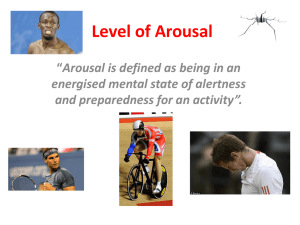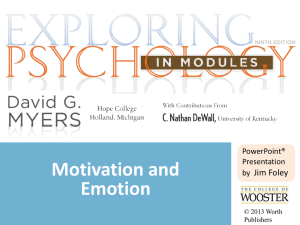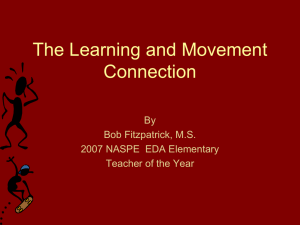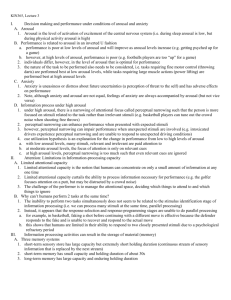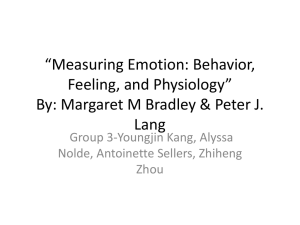Arousal
advertisement
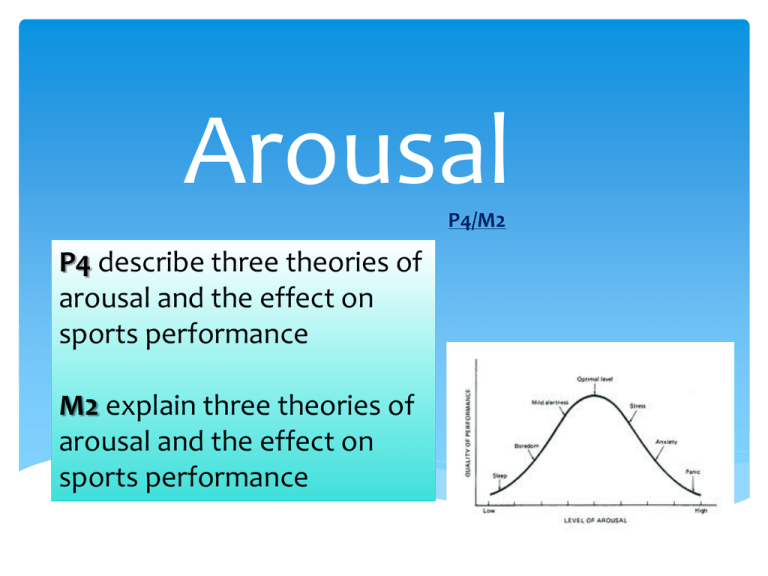
Arousal P4/M2 P4 describe three theories of arousal and the effect on sports performance M2 explain three theories of arousal and the effect on sports performance Definitions… A positive aspect of stress and shows how motivated we are by a situation. The more aroused we become, the more interested and excited we are by the situation. ‘A general physiological and psychological activation of the organism (person) that varies on a continuum from deep sleep to intense excitement’. Continuum Arousal continuum showing varying levels of arousal… Deep Sleep Mild Interest Attentive Absorbed Engrossed Frenzied Cognitive Arousal can be Somatic Cognitive- involving thought processes… or even Somatic- involving a change in bodily response. If we become over-aroused this usually has a negative affect on performance, caused by anxiety and stress. Theories of arousal Drive theory Inverted ‘U’ theory Catastrophe theory Each theory has its use in explaining the relationship between arousal and level of performance… Drive theory Drive theory suggests a linear relationship between arousal and performance. Hull (1943): As arousal levels rise, so does performance. In a linear fashion. Having positive effect on performance!! Yet… Later research adapted this theory, proposing that the performer’s dominant habit or response would be more evident as his or her arousal level increased. Dominant response: if a skill is learned well= positive performance. If the performer is a novice… how will this affect their performance?? This relationship is expressed as P = f (H x D) Where P = performance f = function H = dominant habit or response and D = Drive or level of arousal Inverted ‘U’ theory A – Under aroused – performer may show lack of concentration and attention B – Optimal level of arousal, good selective attention and level of concentration C – Over aroused – performer may lose focus, miss cues, become anxious, experience muscle tension, make poor decisions and possibly display aggressive behaviour Each individual will have a different optimal level of arousal/ IPS (ideal performing state). These factors need to be considered when attempting to determine the personal optimum level of arousal. TASK: With a partner discuss how the following factors may influence optimal arousal. Nature of the task Skill level of the performer Personality of the performer Catastrophe theory Adapted further by Fazey and Hardy (1988)… agreeing with the ‘Inverted U hypothesis’, but once arousal level has reached a certain point, the IPS drops DRASTICALLY, rather than STEADILY! The drop in performance is called Cotastrophe! Rank the following activities in order (1 to 10) of importance for high levels of arousal. Golf putt High Jump Hockey penalty flick Boxing Archery 100m sprint Rugby Pistol shooting Weight lifting Gymnastic vault Task… P4/ M2
